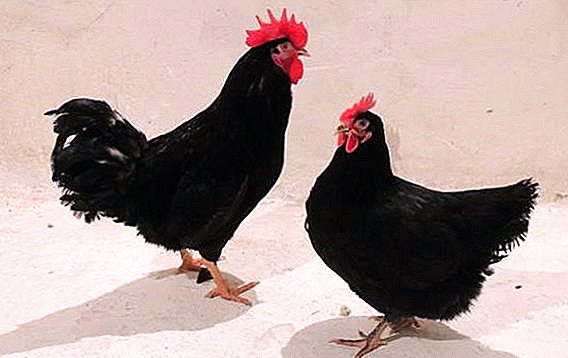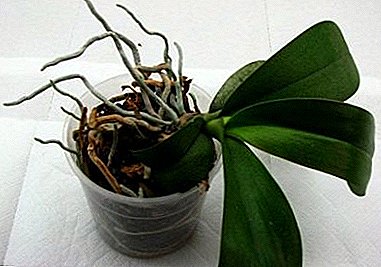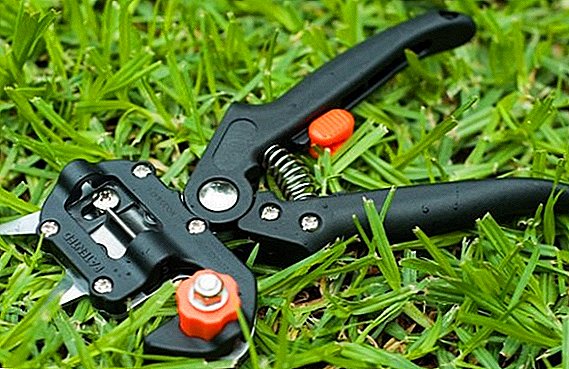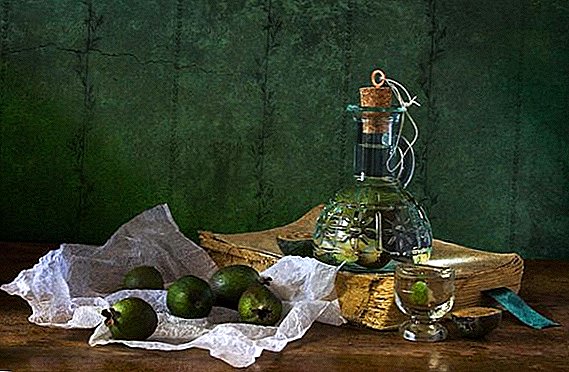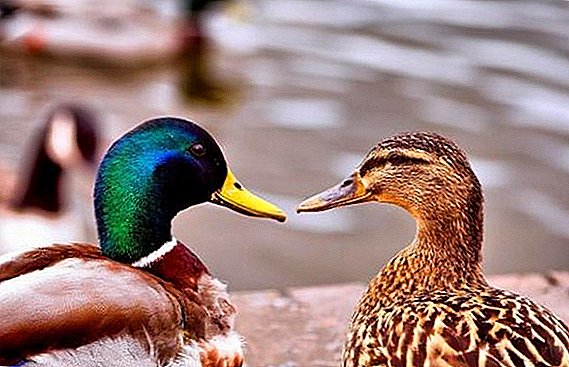 Externally, wild ducks look graceful large agricultural birds. It makes you think about the difficulties in their breeding. Is it so? And how to grow a healthy and strong livestock, we will tell in our material.
Externally, wild ducks look graceful large agricultural birds. It makes you think about the difficulties in their breeding. Is it so? And how to grow a healthy and strong livestock, we will tell in our material.
Features of the wild bird
The content of these birds in captivity involves the creation of conditions for them, ideally close to their natural habitat. It is important not to forget that these birds will constantly strive at will, therefore special care is needed for them. Be sure to cut off water wings at an early age.
Did you know? During molting, wild ducks lose their ability to fly.
The undoubted advantage of wild ducks over domestic breeds is their strong immunity, which is produced in birds living in freedom. Among the shortcomings is to provide a more rigid meat and their relatively small size.
But, if the diet of these birds does not differ from the diet of domestic birds, then their meat will soon acquire different taste qualities, will become similar to the usual duck.  These aquatic animals get along well with the domestic herd, successfully breed in captivity and breed healthy offspring. A distinctive feature of these birds - eggs with green shells.
These aquatic animals get along well with the domestic herd, successfully breed in captivity and breed healthy offspring. A distinctive feature of these birds - eggs with green shells.
Read also about the breeding of duck breeds: musky, white-handed, Beijing (Star-53), Bashkir, blue favorite, mulard.
What breed to choose
For breeding this category of birds is best to choose one breed. As representatives of different species of wild ducks require individual care.
The most popular breeds are:
- mallard ordinary. One of the favorite breeds for keeping in poultry houses. Because of its large size (the weight of an adult can reach 2 kilograms) and the unpretentiousness of the mallard has become the favorite of farmers.
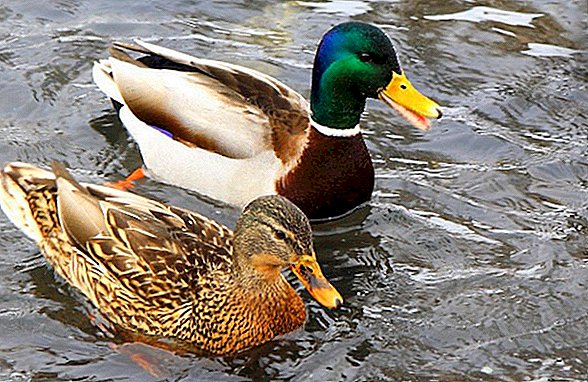 To make the mallard feel comfortable, it needs to provide constant access to the reservoir. Even in winter, these birds are happy to arrange water procedures for themselves;
To make the mallard feel comfortable, it needs to provide constant access to the reservoir. Even in winter, these birds are happy to arrange water procedures for themselves; - red headed pochard. This breed is small in size, the weight of the drakes and females is slightly different and is about 1.2 kg.
We advise you to read the description of various species of wild geese and chickens.
Homemade food can make the dive more well-fed. Diving, like mallard dwelling, settles near water bodies, therefore, when kept in captivity, it is necessary to ensure constant access to water. Diving - good chicks, which carefully care for their offspring, without causing trouble to their masters;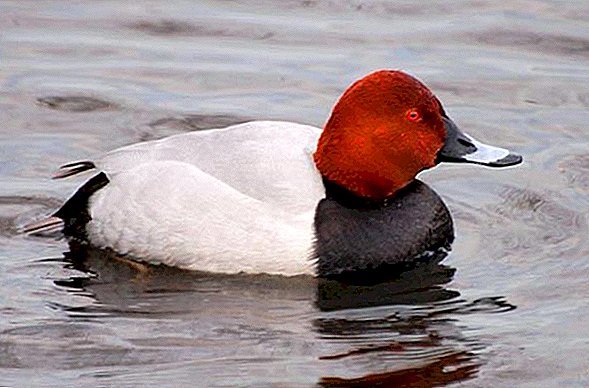
- teal whistle. This bird with a variegated plumage rarely reaches a weight of more than 0.5 kg. Despite its small size, the teal-whistle carries large, chicken-like eggs. To breed this breed is quite profitable - ducks grow quickly, their meat tastes good. Feature teal lies in its ability to take off vertically from a place. This quality he retains in captivity, so the teal must cut the wings;

- common Gogol. These wild waterfowl are bred for slaughtering for meat, which is distinguished by its high taste, and for forestry. Ducks quickly gain weight and carry large eggs. Gogols are unpretentious in maintenance and care.

Important! Catching ducks is best when there is a lot of young stock that has grown up and is not yet good enough to fly.
How to catch a wild duck live for breeding at home
There are three basic ways to catch a wild duck alive. Some can only be done by experienced hunters, and some even by a beginner.
So, the wild inhabitant of rivers and lakes can be caught alive with the help of:
- hinges;
- traps;
- by hands.
Video: how to catch a wild duck using a trap Only experienced hunters can cope with a loop with the help of a loop: the bird is attracted by the bait (the food it loves) and the hunter, sitting in ambush, draws a loop on its paws or torso. The complexity of the method lies in the high risk of injury to birds
Trapping is much easier. To catch a bird alive and unharmed, you only need a box or cage, equipped with a special return mechanism, which is triggered by the weight of a duck. When the bird sits on the roof of the trap, it will fall inside. To facilitate the process of fishing, you can use baits, which are placed on the covers of boxes.
Did you know? Duck feathers cannot be wetted with water without subjecting them to special treatment.
Catching wild birds with their hands is only possible for those who know the basic rules of duck behavior. When danger is approaching, the uterus distracts the predator's attention to itself, and the young bird tries to hide. At this time, he is most vulnerable, because the birds do not move and sit quietly. 
Breeding wild ducks at home
Breeding wild ducks in captivity is almost the same as breeding domestic poultry.
Nutrition and feeding
Whatever the diet of wild ducks, they will never gain the mass of their domestic counterparts. The only thing that can be achieved in such a diet is the similarities in the taste qualities of the meat of wild and domestic birds. In the wild, these waterfowl eat fish, river vegetation, algae and small insects.
Learn the features of feeding ducks at home.
In captivity, you can feed ducks with hard varieties of barley and buckwheat, fresh fish, small crustaceans, bloodworms. Food should be chopped, but not very finely.  Be sure to eat birds should eat medium-sized pebbles and clean river sand. It is also important that ducks have round-the-clock access to clean drinking water. Ducklings eat the same thing as chickens - grass, boiled egg, vitamin supplements.
Be sure to eat birds should eat medium-sized pebbles and clean river sand. It is also important that ducks have round-the-clock access to clean drinking water. Ducklings eat the same thing as chickens - grass, boiled egg, vitamin supplements.
Bird care
The owner should take care of regular cleaning in the duckling. This will help avoid the spread of various diseases.
Important! In the summer, water for waterfowl must be supplemented with a weak solution of potassium permanganate to protect livestock from intestinal infections.
Since wild ducks have a strong immunity, their vaccination is carried out only in dysfunctional in terms of incidence of farms.
Video: breeding wild ducks at home It is important that the bird has the opportunity to freely walk around the territory of the house - for wild ducks, walking and the availability of natural or artificial water bodies is obligatory. The paddock should be equipped with a canopy that will help protect the birds from rain and sun.
Conditions of detention
These birds tolerate cold well, so the duckling does not need special heating. But it is better if the owner still takes care of protecting the herd from severe frosts and provides for the possibility of warming the room. It should also be aired daily to avoid the spread of various infections.
It will be interesting for you to read about why a duck floats on water, how to properly keep chickens and ducks together, how to properly prune ducks' wings, how much a duck eats before slaughtering and how to carve a duck, how to pluck a duck without hemp.
The room should be clean and dry. The Utyatnik itself must be spacious enough - the ideal density of heads is no more than three per square meter. In the warm season, waterfowl feel comfortable in the fresh air, where they can be around the clock.  With the onset of cold weather, they need to organize lighting (daylight to preserve egg production should last at least 14 hours) and warm the floor with a thick layer of straw bedding. In nature, wild ducks equip their nests in small pits.
With the onset of cold weather, they need to organize lighting (daylight to preserve egg production should last at least 14 hours) and warm the floor with a thick layer of straw bedding. In nature, wild ducks equip their nests in small pits.
At home, for waterfowl you can build special nests, but not the fact that the bird wants to sit on it. These birds are good mothers who boast strong and fast-growing offspring. Therefore, human intervention in the care of newborn chicks is minimized.
Learn how to build a duck shed with your own hands.
Breeding wild inhabitants of reservoirs at home does not require special knowledge and a lot of work. With the right approach, it can be not only interesting, but also quite profitable occupation. After all, tasty and protein-rich wild duck meat is highly valued in the market, and the birds themselves are always in demand in forestry.
Reviews from the network




 To make the mallard feel comfortable, it needs to provide constant access to the reservoir. Even in winter, these birds are happy to arrange water procedures for themselves;
To make the mallard feel comfortable, it needs to provide constant access to the reservoir. Even in winter, these birds are happy to arrange water procedures for themselves;




